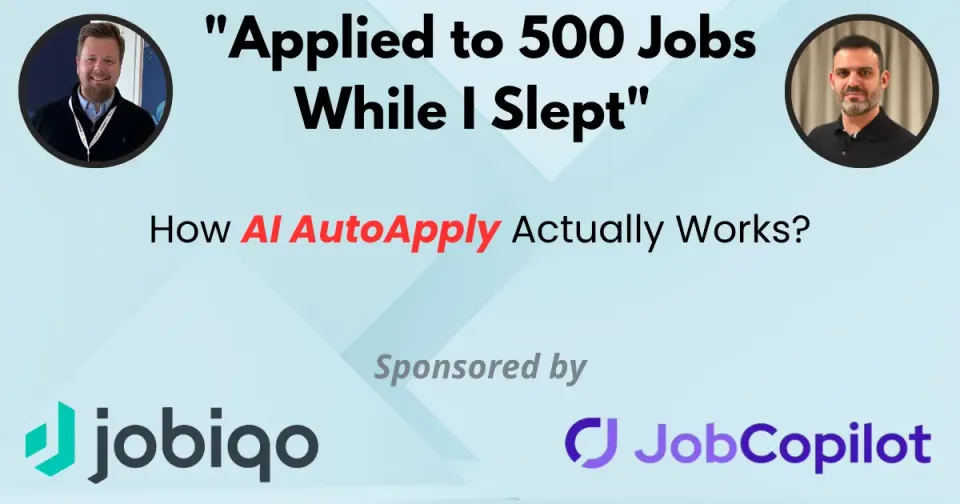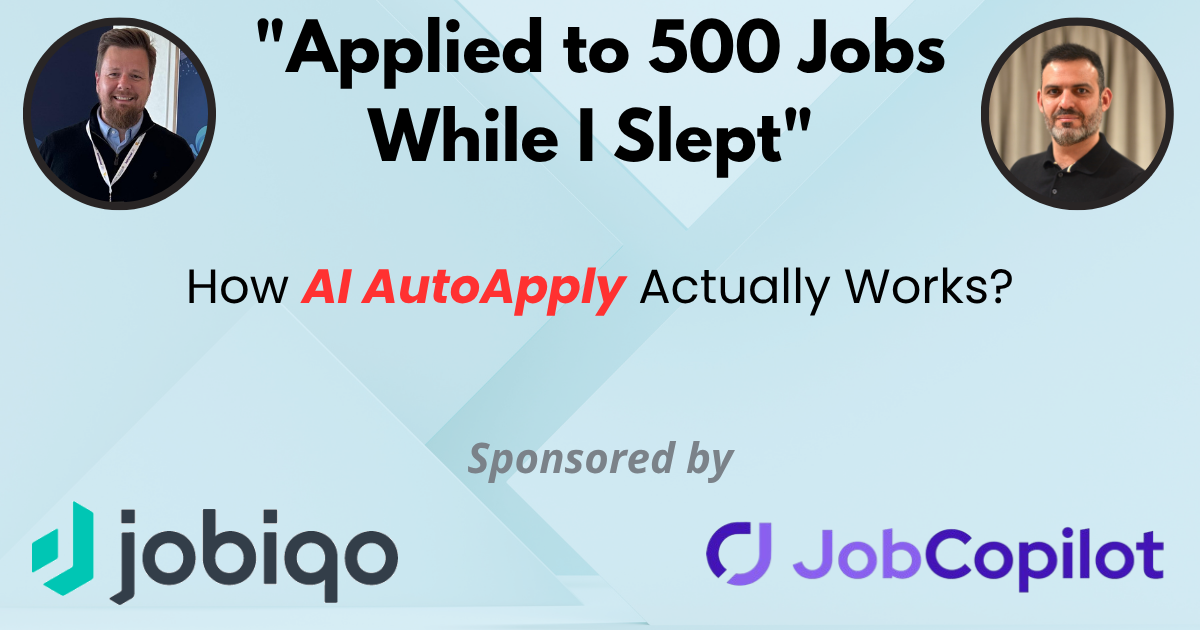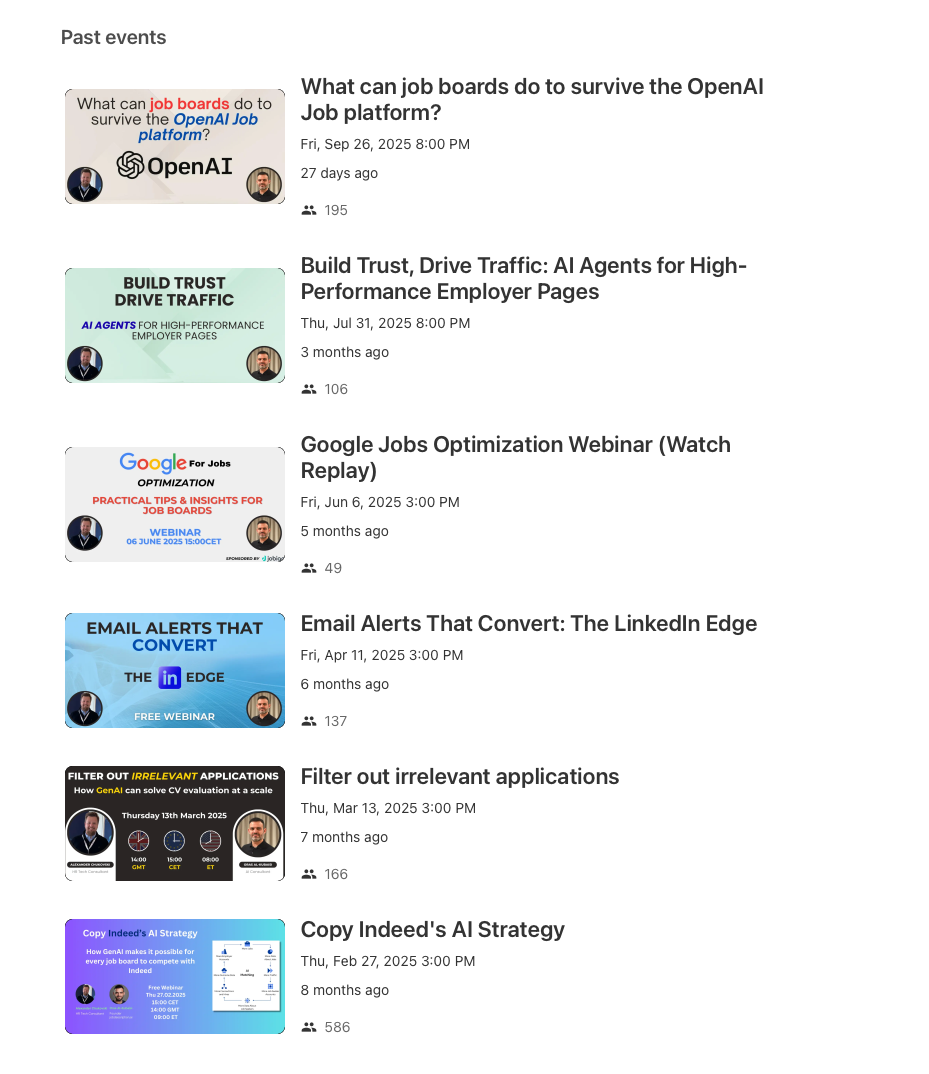Webinar: How AI Auto Apply Actually Works

Auto Apply or AI Apply technology is transforming how candidates engage with job boards, and most platforms are still figuring out what that means for their business.
Therefore, Oras and I are hosting a free webinar to dive deep into this topic on Wednesday, the 5th of November at 3 PM CET / 2 PM UK / 9AM EST. Click the button below to save your spot.
What are AI Apply Tools?
AI Apply tools, sometimes called auto-apply bots or application automation engines, use job scraping, headless browsers and AI to mimic how a human searches and applies for jobs - at scale.
Instead of just autofilling forms, these systems can analyze job descriptions, match them to a candidate’s stored profile or résumé, and automatically customize application responses or cover letters to increase relevance. Some even imitate user interactions to bypass CAPTCHA or session tracking systems on major ATS platforms and job boards.
Popular examples include LazyApply, MassApply, LoopCV, and JobCopilot, each offering different levels of automation - from simple form-fill extensions to complete browser emulation and application management dashboards. These tools often promise candidates higher “application volume” and greater job visibility, but they also raise important questions about authenticity, data privacy, and the actual impact on platform engagement metrics.
There are various types of AI Apply tools, each offering different levels of automation and integration. Browser extensions (like LazyApply or Simplify.jobs) work directly inside job portals such as LinkedIn or Indeed, using client-side scripts to autofill forms and submit applications automatically. They’re relatively simple to develop but rely heavily on the site’s current layout, which means they often break when job boards update their designs or authentication processes.
On the other end of the spectrum are cloud-based SaaS platforms (such as JobCopilot or LoopCV) that centralize a candidate’s profile and manage applications across multiple ATS platforms from a single dashboard. These systems typically use complex proprietary job scraping, browser emulation, proxies and third-party integrations to handle form submissions at scale.
Some SaaS platforms also offer direct jobs to candidates, so they don’t have to leave the platform to visit a job board or the career pages of companies. This makes these platforms direct competitors of job boards for organic traffic.
A smaller but growing segment includes hybrid or white-label solutions that combine hosted backends with browser automation and can be integrated directly into job boards as branded “quick apply” or “AI apply” features. UBIO is a company that operates in this area. These are often the most relevant for job board platform operators because they enable new monetization models and offer tighter control over user data and analytics without end-to-end ATS integration. Of course, they use the same technology principles.

How do AI Apply tools work?
These platforms act as bulk application engines; they parse job listings, automatically fill applications with stored candidate information, and submit multiple applications without requiring the candidate to engage with each opportunity actively.
Some advertise the ability to apply to hundreds or thousands of positions daily.
What we will cover:
This webinar explains the technical facts behind automated application tools - how they're designed, how they operate, and what job boards need to know about the architecture supporting bulk submissions. We'll walk through the mechanics: scraping, form parsing, authentication handling, and the actual technical stack that enables candidates to fire off applications across multiple platforms without touching a keyboard.
Then we'll analyze what this means specifically for job boards, how AutoApply partnerships differ from traditional ATS integrations, where data ownership boundaries are drawn, and what strategic choices platforms face as this traffic begins hitting their systems. But there are also scenarios where this technology solves actual problems. We'll map those out without the vendor spin.
We will also discuss the platform perspective: how job boards can assess AutoApply partnerships compared to traditional ATS integrations - covering the architectural differences, data ownership implications, and strategic factors.
Job boards can integrate AutoApply tools as white-labeled features or referral partners, earning affiliate commissions when users subscribe to premium application automation services directly through the platform.
Final words
The format includes a live demonstration, so you can see AutoApply in action instead of just looking at slides about it. JobCoPilot is sponsoring the event, and their CEO will be available to answer technical questions about how the product works from the vendor side. The event is also sponsored by our friends at Jobiqo, the company behind the most advanced and popular job board SaaS and programmatic job advertising product, Jobiqo AIR.
This isn't a pitch session. It's a technical and strategic briefing for platform operators who need to understand how this technology intersects with their business models, traffic patterns, and long-term competitive positioning.
Our sponsors!
We want to thank our sponsors Jobiqo and Jobcopilot for their continuous support since we started the webinar series.

Jobiqo offers the most comprehensive job board SaaS on the market.

Jobcopilot is a white-label AI-Apply tool that job boards can offer to their job seekers and earn additional revenue.
Sign-up to get notified about the latest posts and webinars!
Here is a selection of our past webinars - sign-up for our channel on Crowdcast and you will not miss any.

